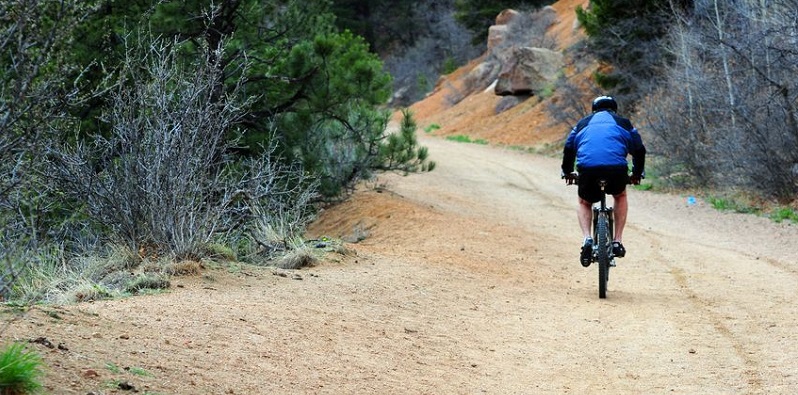Colorado could become the #1 go-to state for bicyclists — budget problems permitting.
Will State Budget Problems Force a Detour?
Unless the tires go flat, Colorado could be on its way to becoming the ultimate haven for U.S. bicyclists. An anticipated $500 million budgetary shortfall for 2017-2018 is what may puncture the prospect.
In September of 2015, Colorado Governor John Hickenlooper set the state on the path to bicycle supremacy by announcing a $100 million plan for building bike trails. At the 2015 Interbike International Bicycle Exposition, he committed the state to spend that amount over four years to increase and improve its 5,000+ miles of biking trails.
But little more than a year later, in November 2016, the governor would release a proposed $28.5 billion state budget with big cutbacks in education, hospitals, and road construction.
What Will Happen to the Bicycle-Path Funding?
So far, the funding for bike paths is intact. But that’s not the end of the matter. Lawmakers have until late May of 2017 to haggle over what stays in and what gets crossed out of the final budget. The governor is expected to sign the finalized budget in June.
At that time, Governor John Hickenlooper said:
“Our goal is to make Colorado the best state for biking in the country. These investments will help fuel our economic growth and tourism industry, move us toward a cleaner environment, and advance our goal of being the healthiest state in the nation.”
Most Physically Active State Could Do Even Better
Colorado has been ranked the most physically active state in the country. Even so, the state has an obesity rate of more than 21 percent.
According to Shailen Bhatt, executive director of the Colorado Department of Transportation:
“Coloradans have put a high priority on providing choice in how they get from A to B, whether for commuting or for recreation, and cycling for many is a key alternative. We believe that including cycling plans into road planning and construction will help us reduce congestion and contribute to solving the transportation challenges facing Colorado.”
CDOT, the Office of Economic Development, the Colorado Tourism Department, and other state agencies are working with organizations like the Colorado Pedals Project, Bicycle Colorado, and Great Outdoors Colorado to develop the strategy, distribute money, and accomplish their shared goals.
CDOT has pledged to spend at least 2.5 percent of its construction budget on bike and pedestrian programs. The agency noted that Great Outdoors Colorado uses state lottery proceeds to improve and maintain parks and rivers, and is the state’s largest source of money for trails.
Staying on the Path to Better Fitness and Greater Safety
Bicycle paths and trails are important not only because they encourage bike riding as a form of exercise, but also because they help prevent accidents by protecting bicyclists from the heavier traffic on the road.
Colorado saw a record number of deaths among cyclists in 2016, when 16 riders died from injuries on the state’s roads. That’s up from 14 riders in 2015 and 10 riders in 2013; and the 2016 number represents more deaths from bicycle accidents in Colorado than in any year since at least 2002, the earliest year for which data are available.
As late as December 2016, Colorado lawmakers seemed concerned about paying for bicycle trail improvements. The topic was discussed in the joint transportation committee hearing, with lawmakers seeking an update on the four-year, $100 million project.
In its response, CDOT — which provides electronic and paper maps of all Colorado’s bike paths through its website — said that the money has been dedicated and would be available for related projects.
Greater Outdoors Colorado will provide $30 million. Federal transportation programs will channel $60 million, which CDOT provides in turn to local government to select and carry out the trail projects. CDOT’s own contribution of $10 million over four years is funding for Colorado’s Safe Routes to Schools program, which gives grants to local agencies to build safer methods for children to bike or walk to school.

